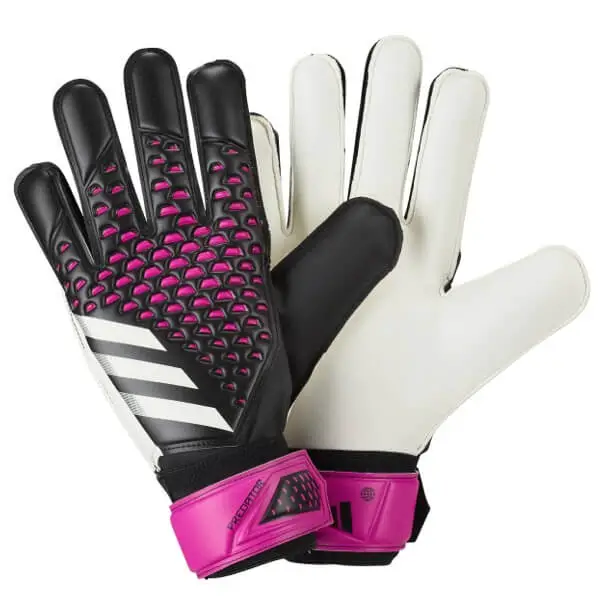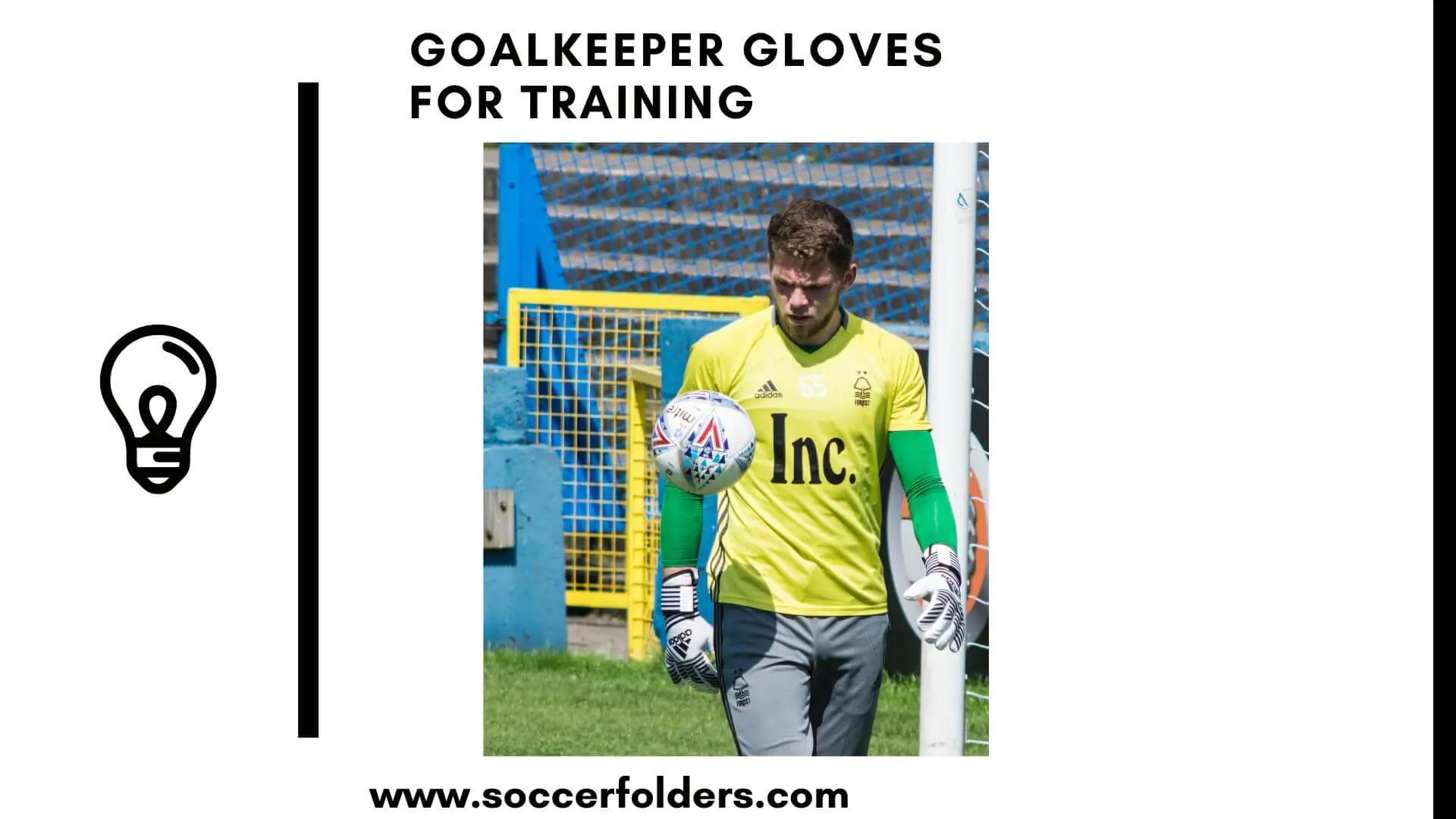As a goalkeeper, having the right pair of gloves is essential. Your training gloves can make all the difference in your performance and can be the difference between a save and a goal.
However, choosing the right gloves can be overwhelming with so many options available.
In this article, we’ll explore my #1 recommended goalkeeper glove for training and provide you with insights on why it is the best pair for your needs.
Let’s get started.
Quick Navigation
Goalkeeper Gloves for Training
1. Match Gloves vs. Training Gloves
The first thing to consider when choosing goalkeeper gloves is whether you need match gloves or training gloves.
Match gloves are designed for game day and are built to provide the best possible performance. They often have more durable materials and a better grip, providing maximum protection and support.
Training gloves, on the other hand, are designed for practice sessions. They are often less expensive and more lightweight than match gloves. They offer a good balance of protection and grip, but they may not be as durable as match gloves.
When choosing between match gloves and training gloves, it’s essential to consider how often you’ll be using them and what you need them for.
If you’re playing competitive games regularly, it’s worth investing in a high-quality pair of match gloves.
If you’re using your gloves primarily for training, a good pair of training gloves should suffice.
2. Cut
The cut of your gloves refers to how the gloves are constructed. There are four main types of cuts:
- Flat Cut: This is the most traditional cut, and it provides a snug and comfortable fit. Flat cut gloves are a good choice for goalkeepers with wider hands or those who prefer a looser fit.
- Roll Cut: Roll cut gloves have the latex rolled around the fingers, providing a more secure grip on the ball. This cut is best for goalkeepers who prefer a tight and snug fit.
- Negative Cut: Negative cut gloves have latex on the inside of the gloves, providing a closer and more secure fit. This cut is ideal for goalkeepers with narrow hands.
- Hybrid Cut: Hybrid cut gloves combine different cuts to provide a customized fit. This cut is ideal for goalkeepers who have unique hand shapes and sizes.
When choosing the cut of your gloves, you must consider your preference and the shape of your hands. Trying on different cuts can help you determine which one provides the best fit and comfort.
==>> You can also read the difference between Roll and Negative cut here.
3. Palm Material
The material used on the palm of your gloves is another critical factor to consider when choosing goalkeeper gloves for training. There are three main types of palm material:
- Latex: Latex is the most common material used on goalkeeper gloves. It provides excellent grip and is ideal for catching and holding the ball. However, it’s not the most durable material, and it can wear down quickly, especially in wet conditions.
- Synthetic: Synthetic materials, such as polyurethane or PVC, are more durable than latex. They offer good grip and are often used on training gloves. However, they don’t provide the same level of grip as latex.
- Mesh: Mesh is a lightweight and breathable material that is often used on the back of goalkeeper gloves. It allows air to flow through the gloves, keeping your hands cool and dry. However, it doesn’t provide any grip, so it’s not used on the palm of the gloves.
When choosing the palm material for your gloves, you have to consider the conditions you’ll be playing in and how often you’ll be using them. Latex provides the best grip, but it can wear down quickly, while synthetic materials offer durability but less grip.
4. Closure
The closure of your gloves refers to how they fasten around your wrist. There are three main types of closure:
- Velcro: Velcro is the most common type of closure for goalkeeper gloves. It’s easy to adjust and provides a secure fit. Velcro closures come in different widths and lengths, allowing for customization and comfort.
- Elastic: Elastic closures are stretchy and provide a secure fit without the need for adjustments. They are often used on training gloves and can be a good option for younger or beginner goalkeepers.
- Bandage: Bandage closures wrap around the wrist and provide a customized fit. They offer maximum support and protection, making them a popular choice for match gloves.
When choosing the closure for your gloves, consider the level of support and customization you need. Velcro closures are the most versatile and can be adjusted as required, while bandage closures offer maximum support and protection.
Importance of Gloves in Training
Using goalkeeper gloves during training is essential for any serious goalkeeper. Training with gloves allows keepers to develop the muscle memory needed to make saves in games.
It also helps build confidence and comfort with the gloves, which can lead to improved performance.
When training without gloves, keepers risk developing bad habits, such as not using proper technique or hesitating to make saves. Additionally, training without gloves can lead to blisters and calluses, which can be painful and affect your performance in games.
So, using goalkeeper gloves during training can help keepers improve their skills, build confidence, and protect their hands.
Different levels of Gloves
Goalkeeper gloves come in different levels of quality, from beginner to professional, and choosing the right level can make a big difference in a player’s performance.
Beginner gloves are typically less expensive and are designed for younger players or those who are just starting. They often have less padding and less durable materials.
Intermediate gloves are a step up from beginner gloves and offer better materials, more padding, and a better fit.
Professional gloves are the highest level of goalkeeper gloves and are designed for serious and experienced players. They offer the best materials, including the highest quality latex, and provide the most advanced technology for grip and control. They also tend to have a higher price point.
Choosing the right level of gloves depends on a player’s skill level, frequency of play, and budget.
A more experienced and serious player would benefit from a higher quality, professional-level glove, while a younger or less experienced player may be better suited to a beginner or intermediate-level glove.
My Recommended Training Glove for Goalies
If you’re looking for a high-quality training glove, the Adidas Predator Training Goalkeeper Gloves are a great option.

These gloves are designed with durability and comfort in mind, making them an ideal choice for goalkeepers who want to improve their skills and performance.
One of the standout features of the Adidas Predator Training Goalkeeper Gloves is the palm material.
The gloves are made with a soft, cushioned latex palm that provides excellent grip and control in all weather conditions. This is important for training, as you’ll need a glove that can handle a variety of conditions and surfaces.
In addition to the palm material, the Adidas Predator Training Goalkeeper Gloves feature a positive cut, which provides a comfortable and snug fit. The gloves also have a bandage closure system, which allows for a customized fit and maximum support.
Another benefit of the Adidas Predator Training Goalkeeper Gloves is their durability. The gloves are designed with a durable latex backhand, which helps protect your hands during training and matches. This is important for goalkeepers who are constantly diving and making saves, as their gloves can take a lot of wear and tear.
Finally, the Adidas Predator Training Goalkeeper Gloves have a stylish design that will make you feel confident and ready to perform on the field. The gloves come in a bold black-and-white colour scheme, with a little bit of dark pink with the Adidas logo prominently displayed.
Overall, the Adidas Predator Training Goalkeeper Gloves are a great choice for goalkeepers who want a high-quality training glove that provides excellent grip, comfort, and durability.
These gloves are designed with the needs of goalkeepers in mind and will help you improve your performance on the field.
==>> Get it here!
Final Thoughts
Choosing the right goalkeeper gloves for training can be a daunting task, but by considering the factors outlined in this article, you can make an informed decision that will enhance your performance on the field.
Consider whether you need match gloves or training gloves, the cut, palm material, closure, and any additional features you may need.
With the right pair of gloves, you’ll be ready to make those game-winning saves and feel confident in your performance on the field.
You can also check my full list of goalie training equipment here.


